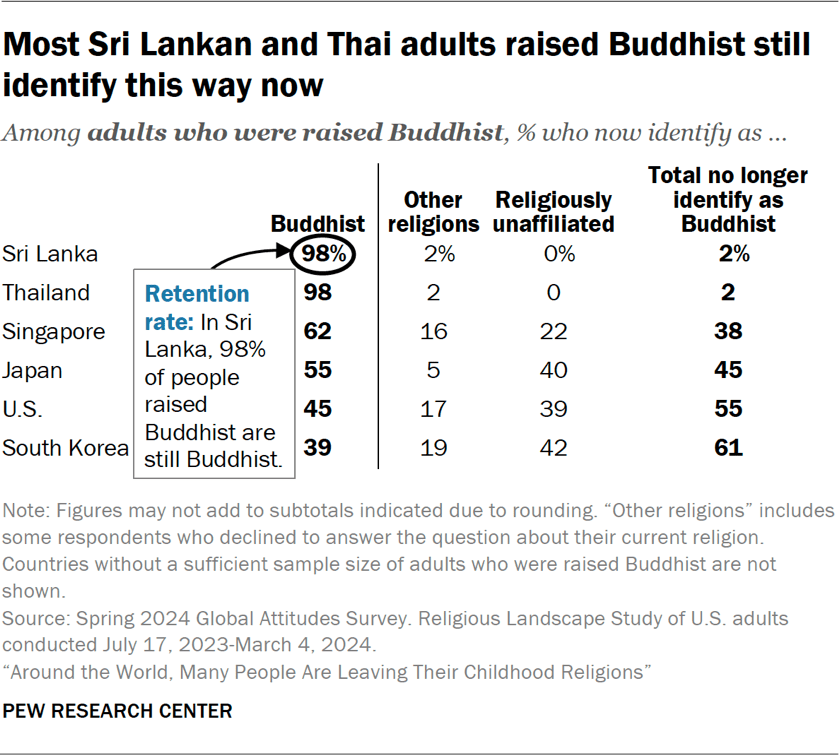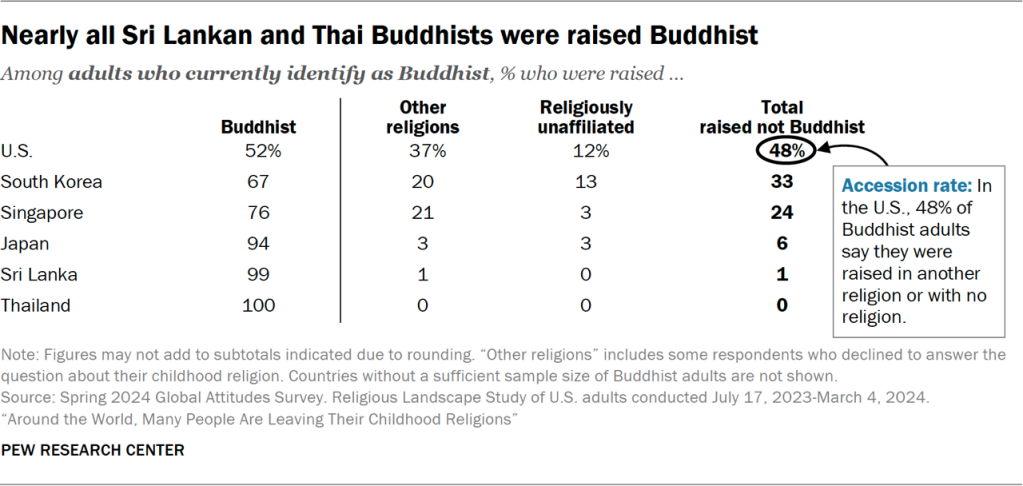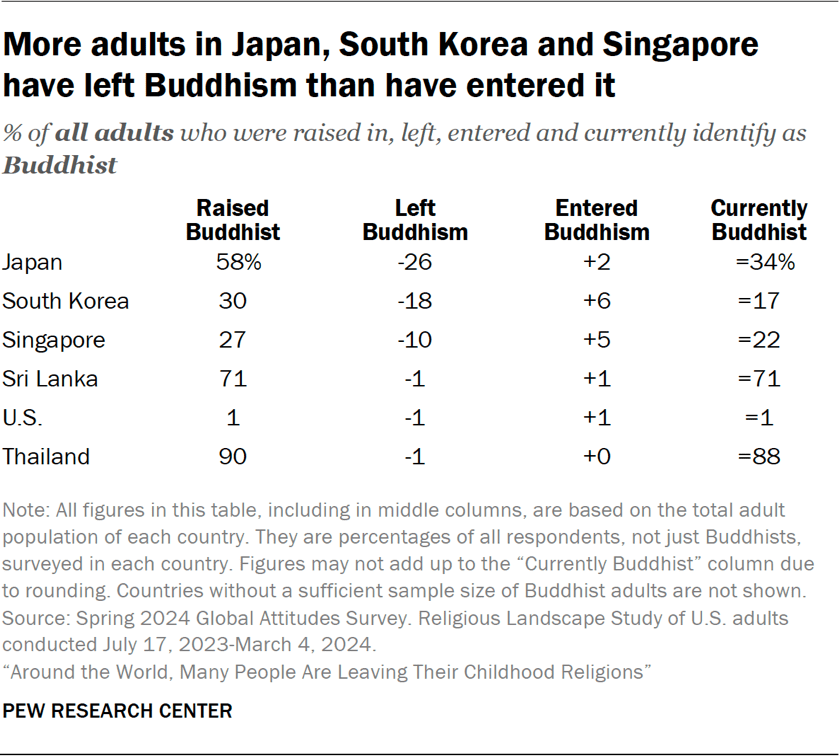This section examines religious switching into and out of Buddhism, detailing where Buddhism has had the largest net losses, what percentage of adults who were raised Buddhist are still Buddhist (i.e., retention rates), which religious groups people who left Buddhism have switched into, and where Buddhism has the largest shares of new entrants (i.e., the highest accession rates).
Along with Christians and religiously unaffiliated adults, Buddhists have relatively high levels of religious switching. However, of the 36 countries surveyed, just six – including the United States – have sufficient sample sizes to allow analysis of religious switching into and out of Buddhism.
Net losses for Buddhism
- More people have left Buddhism than have joined it in Japan, South Korea and Singapore.
- Japan has had the largest net losses for Buddhism from religious switching.
Remaining Buddhist
- Sri Lanka and Thailand have the highest Buddhist retention rates, with nearly all people who say they were raised Buddhist in those countries still identifying as Buddhist today.
- In the U.S. and South Korea, fewer than half of adults who were raised Buddhist remain so.
Leaving Buddhism
- Most of the people who have left Buddhism no longer identify with any religion.
- In Singapore, South Korea and the U.S., small percentages of those raised Buddhist are now Christian.
Entering Buddhism
- The highest levels of “accession,” or entrance, into Buddhism are in South Korea and the U.S., though Buddhists make up a relatively small portion of the adult populations there (17% and 1%, respectively). A third of South Korean Buddhists and about half of U.S. Buddhists say they were raised in another religion or with no religion.
- In the U.S., South Korea and Japan, many people who have switched into Buddhism say they were raised as Christians or without any religion.
Where has Buddhism experienced the largest net losses from religious switching?
In Japan, South Korea and Singapore, significant shares of adults who were raised as Buddhists do not describe themselves that way today.
Japan has experienced the largest losses from Buddhism due to religious switching: 26% of all Japanese adults say they were brought up Buddhist in childhood but don’t identify as Buddhist today.
However, in Thailand and Sri Lanka – two countries where Buddhists make up a majority of the overall populations – 1% or fewer of adults have either left or entered Buddhism, resulting in negligible change between childhood and current religion due to religious switching.
What percentage of people raised Buddhist are still Buddhist?
Buddhist retention rates vary widely. In Sri Lanka and Thailand, nearly all adults who were raised Buddhist still identify as Buddhist today (98% each).
However, in South Korea, the retention rates are much lower: Just 39% of those raised Buddhist still identify as Buddhist.

Which religious groups have former Buddhists switched to?
Analyzing retention rates also reveals the religious groups that former Buddhists have joined. In Japan, Singapore, South Korea and the U.S., many people who have left Buddhism say they no longer identify with any religion. For example, 40% of Japanese adults who were raised Buddhist are now unaffiliated (i.e., identify religiously as atheist, agnostic or “nothing in particular”).
Additionally, in Singapore, South Korea and the U.S., a small percentage of adults who were raised Buddhist now identify as Christian. This ranges from 12% of those raised Buddhist in Singapore to 18% in South Korea.
Where does Buddhism have the largest shares of new entrants?
The U.S. has the highest “accession” (or entrance) rate into Buddhism: About half of Buddhist Americans (48%) say they were raised outside of Buddhism. This includes 33% of U.S. Buddhist adults who were raised as Christians and 12% who were raised without religion.
On the other hand, in all five Asian countries with large Buddhist populations that were surveyed, the majority of people who currently identify as Buddhist say they were raised Buddhist. For example, nearly all Thai Buddhists surveyed say they were raised that way.





